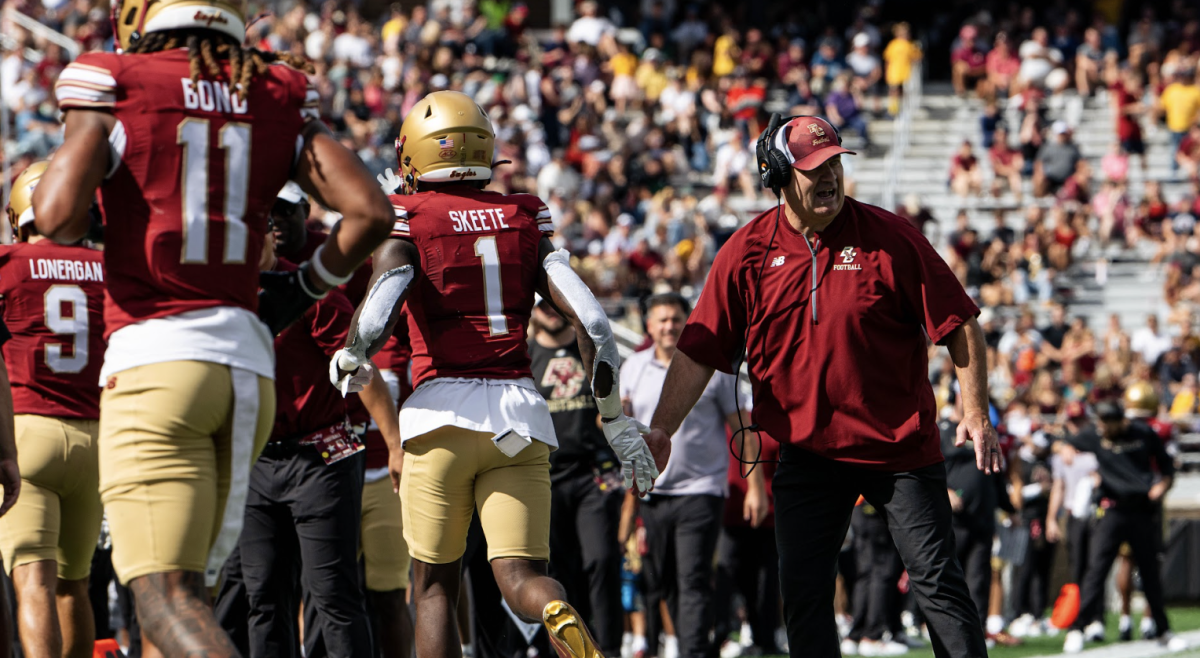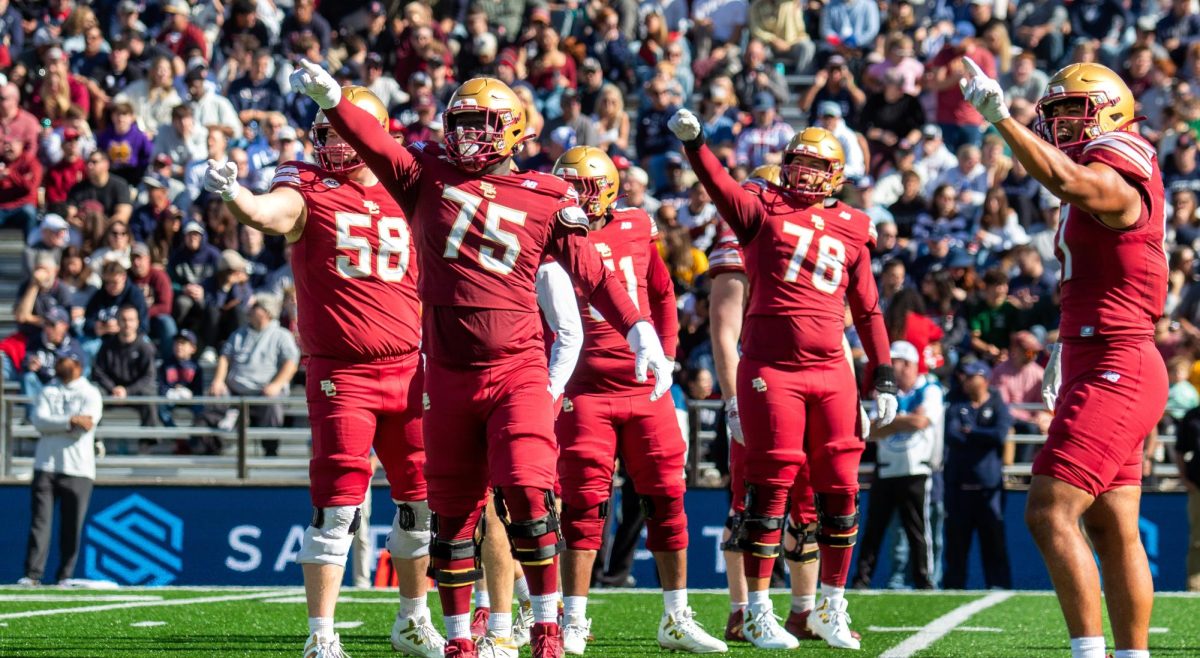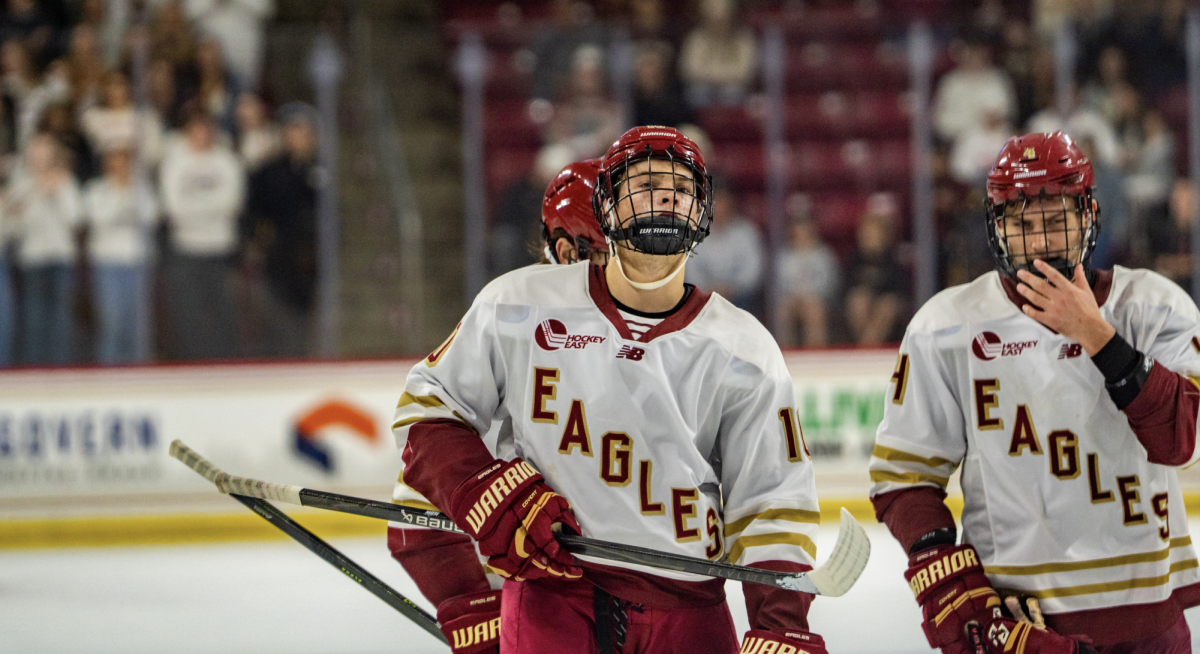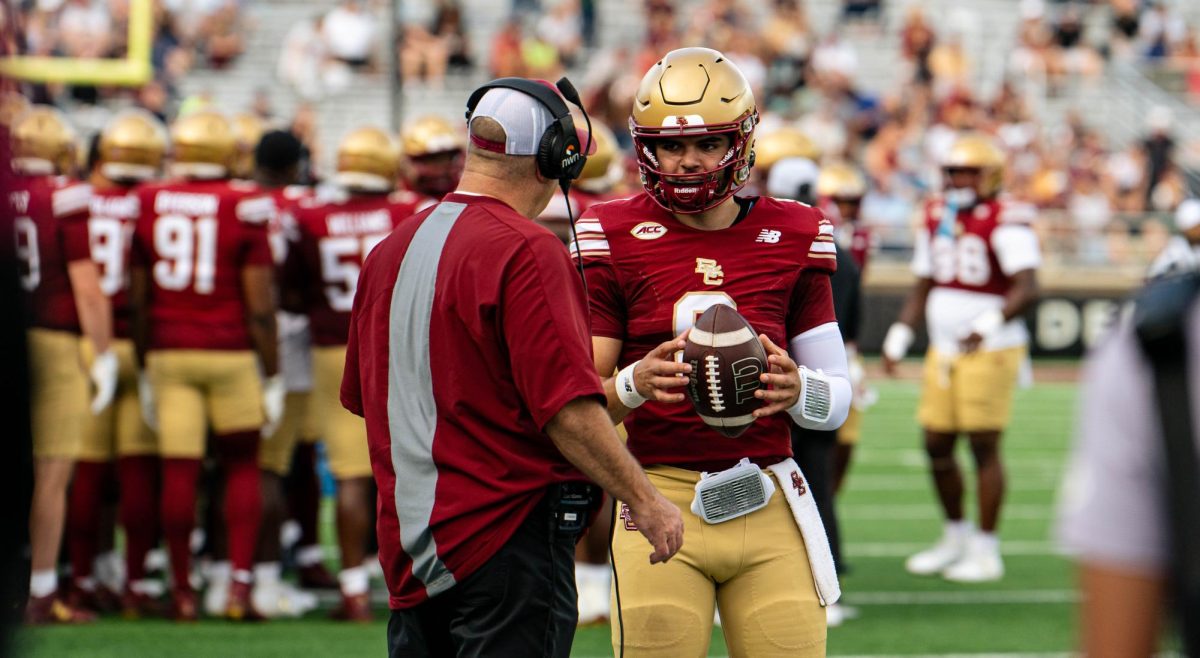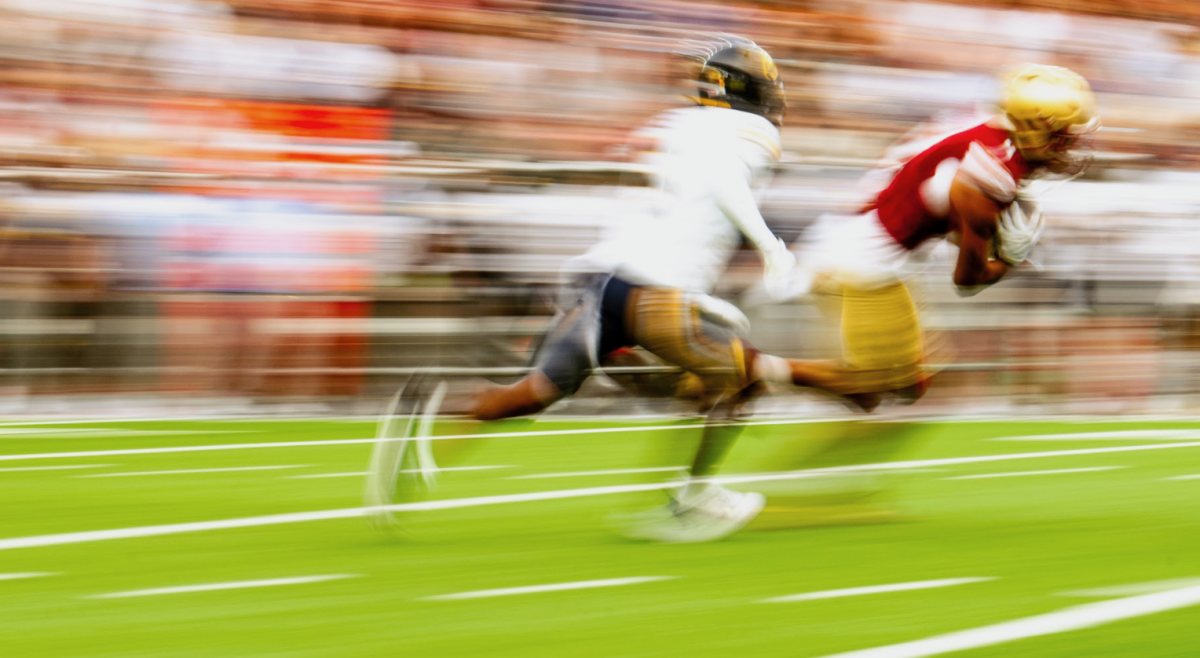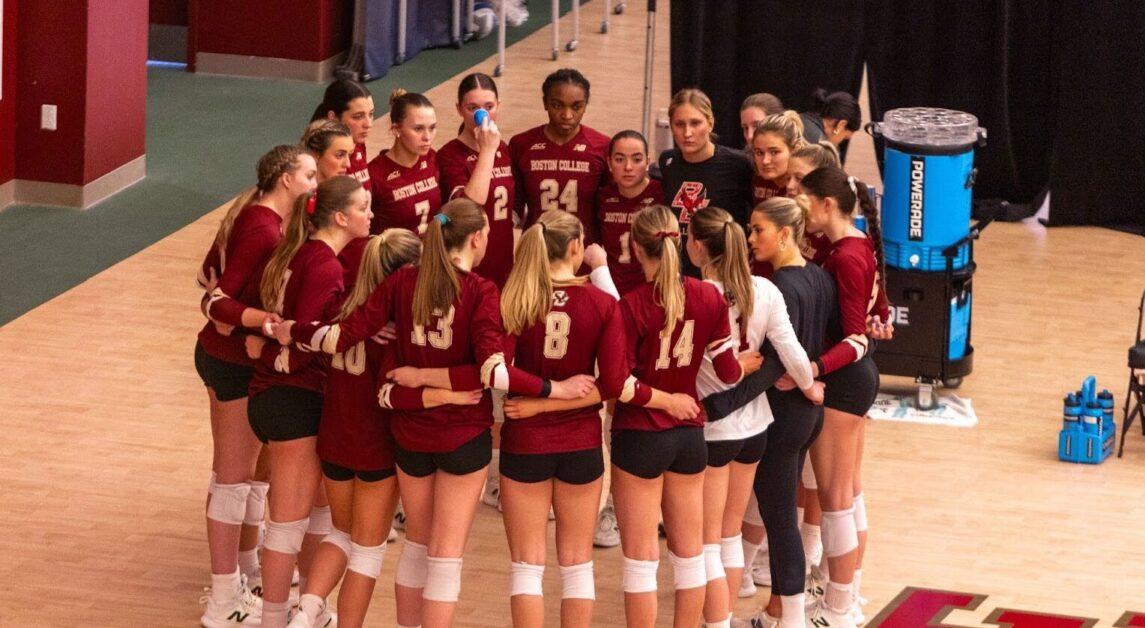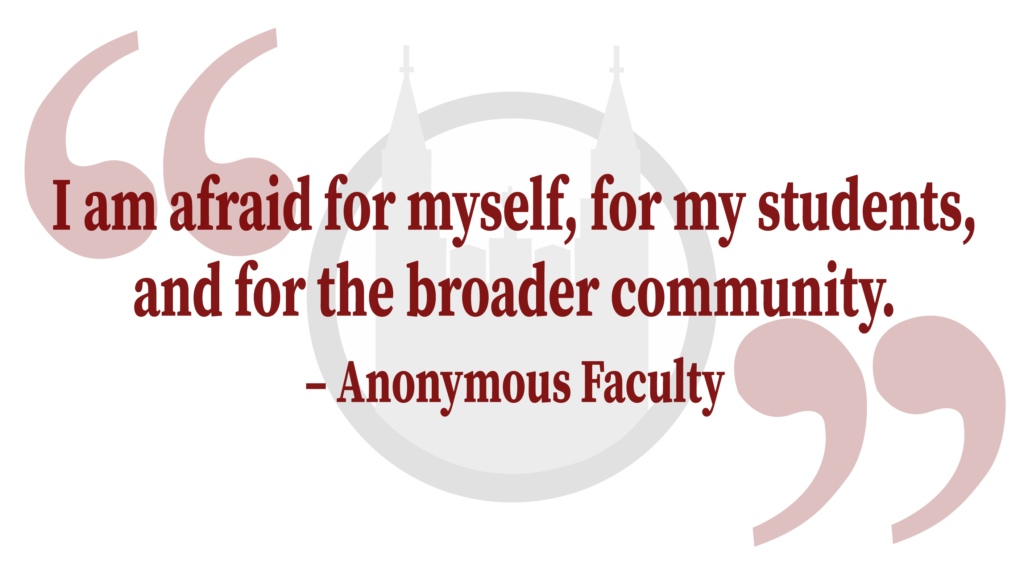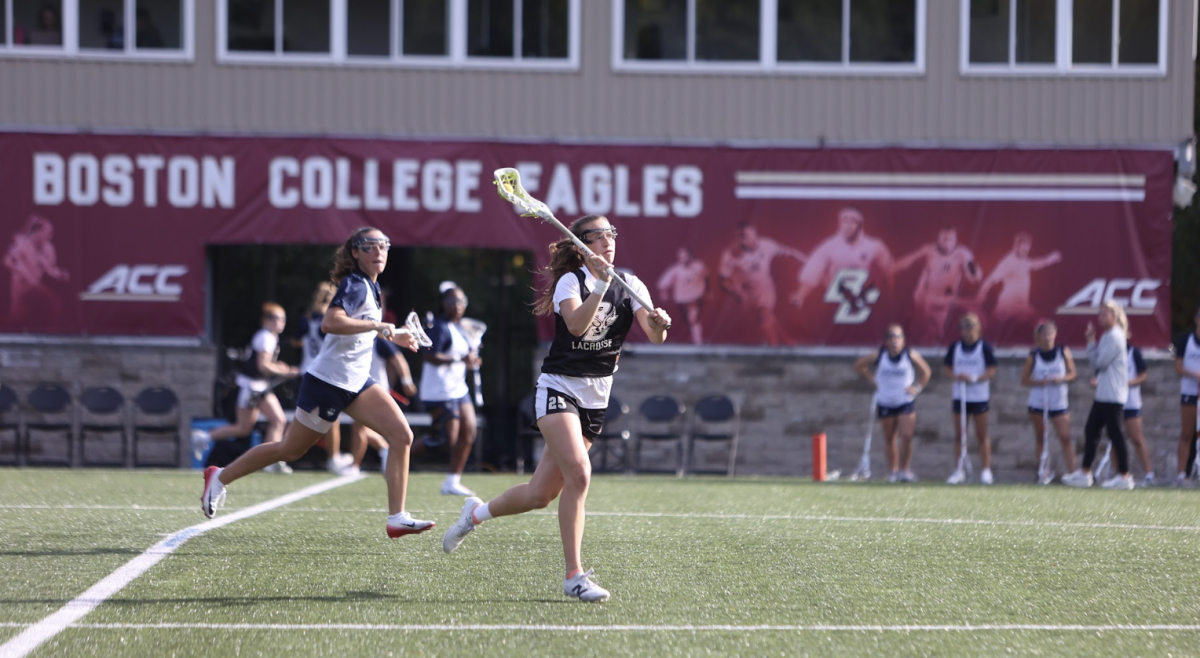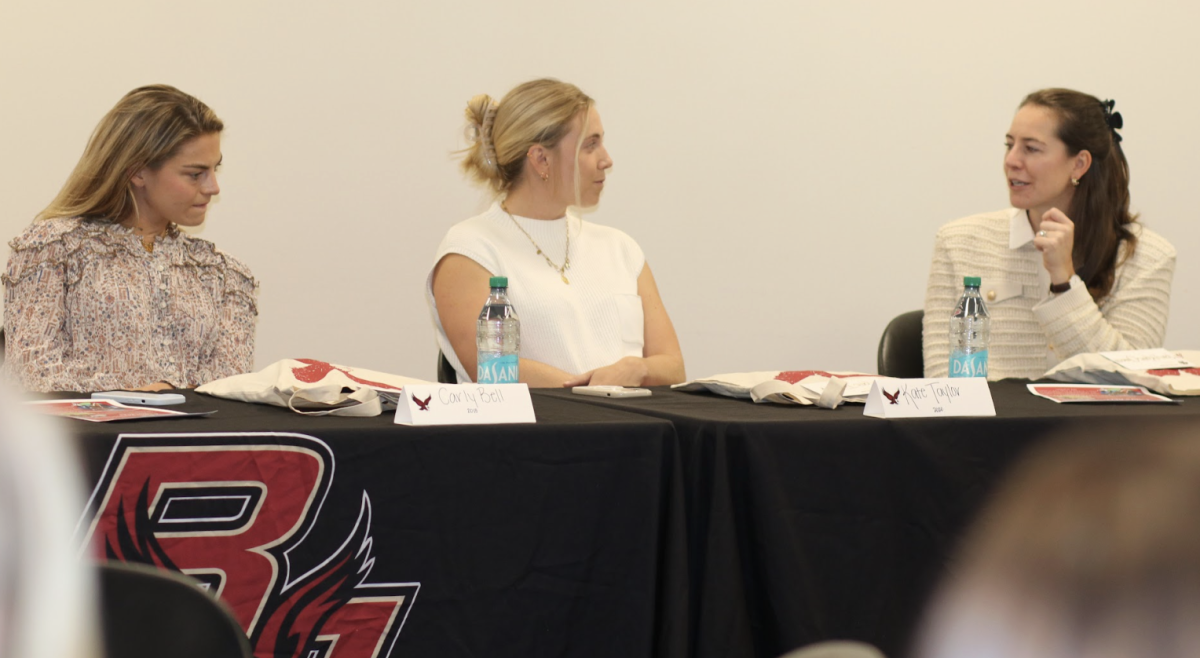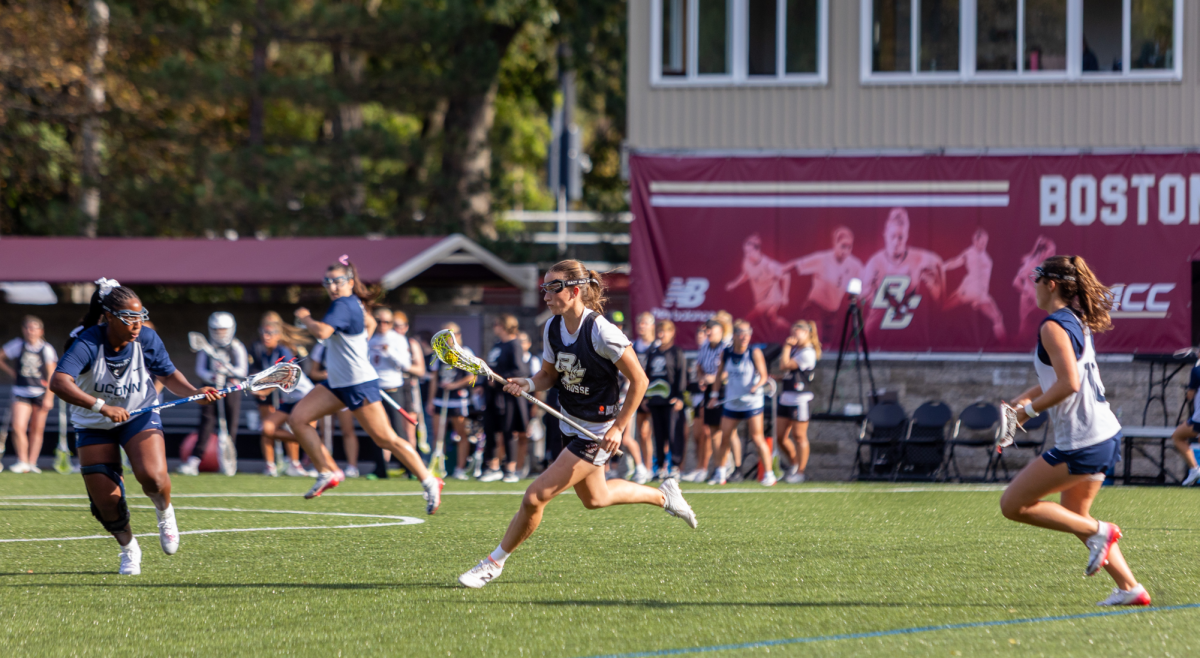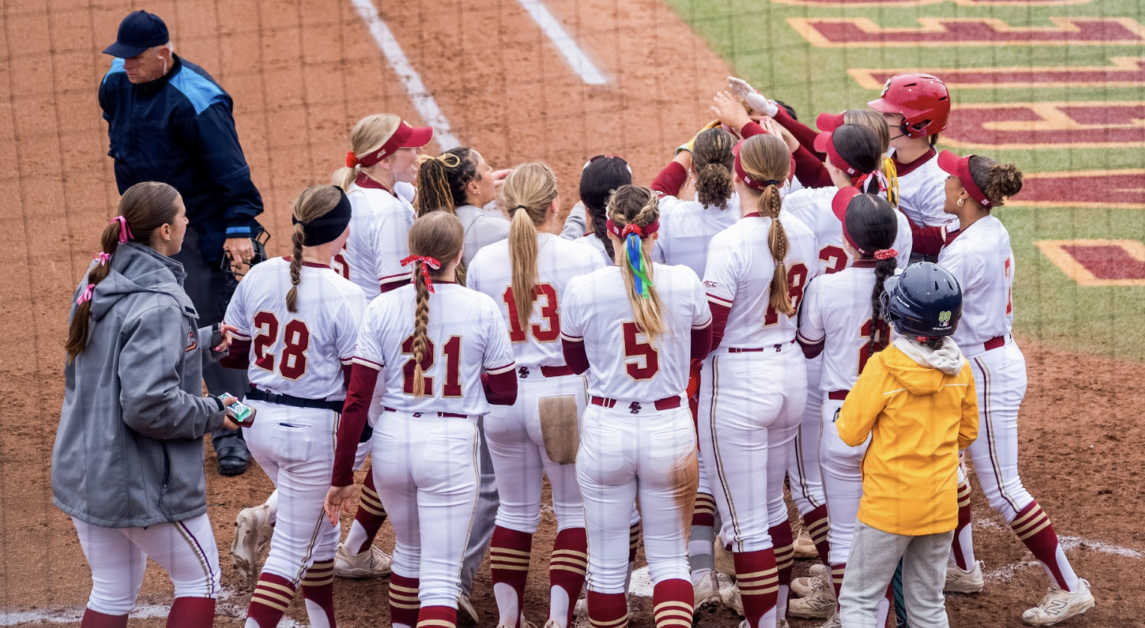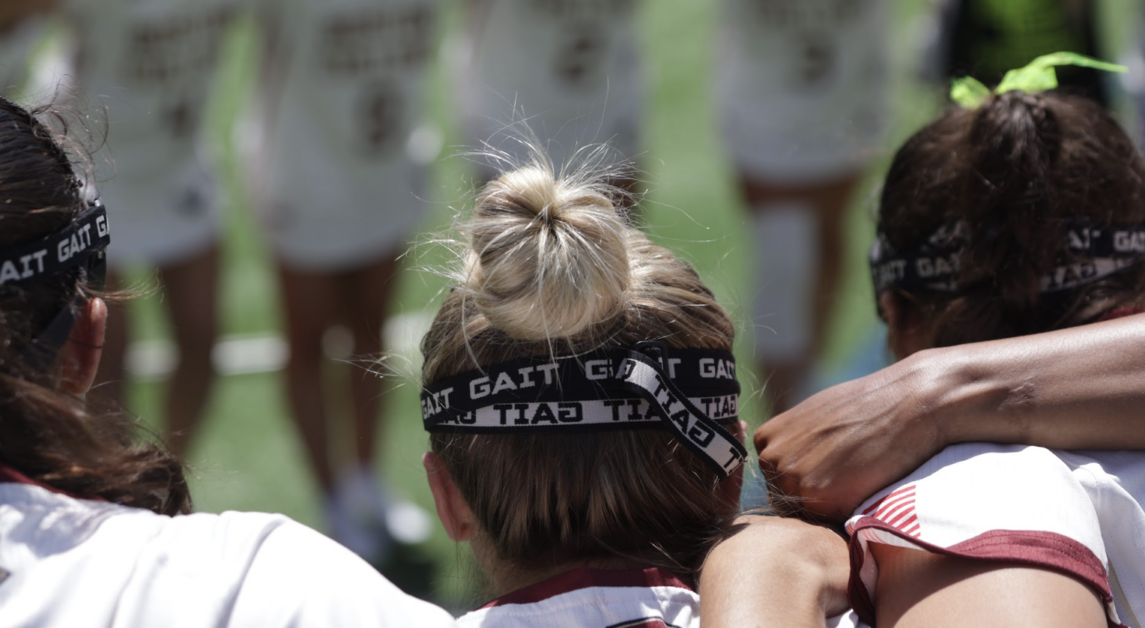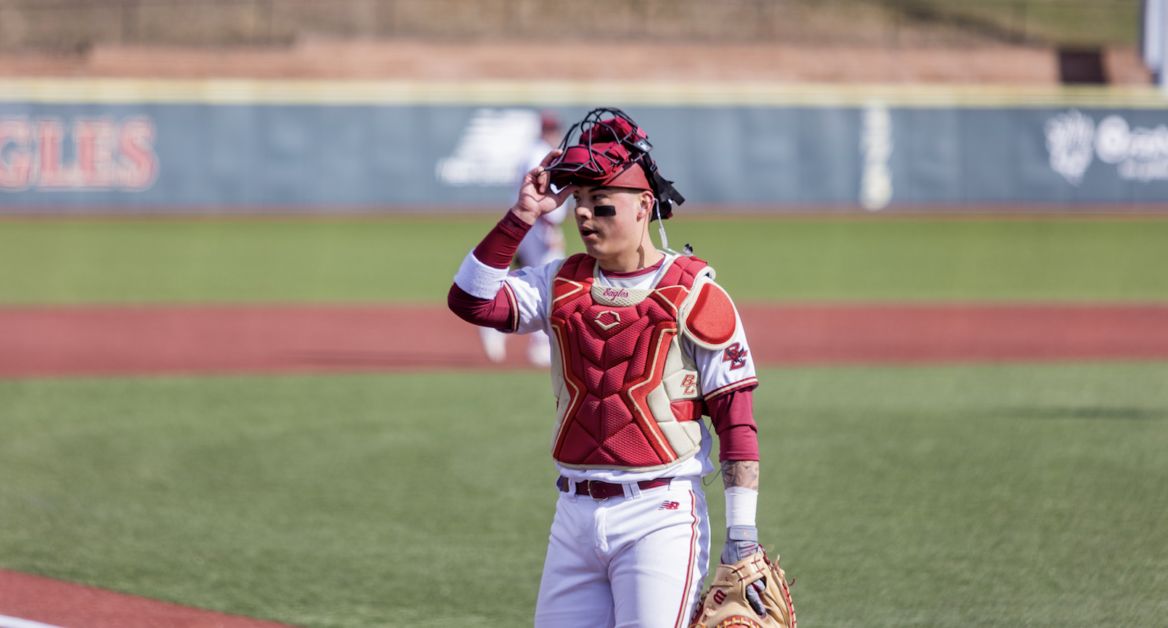“The day ends up being long and it seems that, when you go into Conte, you don’t come out until the light has changed.”
–Mikaela Rix
Midterms and finals suck.
All the stress of the work you probably didn’t do for the entire semester falls on your shoulders at the last second. The rigidity of certain classes’ grading scales make one point the difference between two full letter grades. Sometimes you have two tests on the same day, like I have had six times—three times for finals—already in my young college career (thanks UGBC).
It only gets worse for student-athletes. Take, for example, Collin Fedor, senior runner at Boston College and the outgoing president of the Student-Athlete Advisory Committee (SAAC). He recalled travelling down to Clemson, S.C. last winter for the ACC Indoor Track Championships—a perfect opportunity to escape the brutal cold of Boston for sunny South Carolina, while getting a three-day “break” from school.
I put break in quotes because missing three days of class is not something most professors at BC greet with a warm welcome. And unfortunately for Fedor and other runners, the NCAA and ACC care little about the academic calendars at each of their member schools when scheduling events like this. The tournament came during the week before BC’s infamously early Spring Break—aka the peak of midterm season.
Many members of the track team crammed into a singular conference room to take a test—one they couldn’t have rescheduled for when they returned—at 8 p.m. after a day of competing (and with another whole day of running to follow). Many were up the night before their Thursday races studying, since most flights to ACC schools from Boston last four to five hours and there’s no Internet during flights. The team brought a member of Learning Resources for Student-Athletes (LRSA), a department that provides various services to help athletes meet their scholastic demands, to proctor all of their exams. Some had to use lap boards provided by the hotel. One used an ironing board.
“It’s difficult to really do your best kind of work when you’re in those kind of cramped conditions, but then you’re also trying to focus on what is the most important meet of the indoor season,” Fedor said.
Despite BC’s insistence that academics comes first, yet again, sports was the priority.
Fedor’s example shows one of many difficulties athletes have when balancing on the tightrope between their educational and athletic commitments. It shouldn’t seem surprising, given how much time we can see athletes dedicate to their sports—heck, many of us did the same in high school, too, or still do with our extracurricular activities. But now we know how the athletes feel about all of these pressures.
Last week, CBS Sports’s Dennis Dodd leaked the Pacific-12 Conference’s report on student-athlete time demands. The Pac-12 surveyed 409 student-athletes from nine of its member schools, with equal gender representation and featuring respondents from each sport in the conference. Some results shouldn’t come as a surprise, such as the fact that 80 percent of athletes have missed a class in their careers. But others should raise concerns, like 77 percent of athletes who feel they get less sleep than the rest of the student population or the 73 percent of Pac-12 athletes who feel pressure from coaches to attend every “voluntary” practice.
At BC, athletes experience these pressures regarding time and academic rigor. Fedor admitted that to balance both sports and school, he needed to lower some of his standards in the classroom just so he could sleep a normal amount at night. “I came to college primarily for academics,” Fedor said, “but as I got older…I knew that if I wanted to run well, I needed to get sleep so I could recover, and as a result my standards for academics were declined.” It doesn’t mean he regrets his decision—Fedor believes that it allowed him to focus more on himself and forming relationships as well, an integral part of the college experience. But the fact is, athletes shouldn’t have to decide between developing in the classroom and on the field.
Another big reason for that comes from professors. Because of their constant travel schedules and how many classes they’ll have to miss, many teachers make scheduling classes difficult for athletes. Fedor brought up two examples: a general chemistry professor who insists on each of his students taking his tests at 10 a.m. on its scheduled day, and a class on the history of Boston that he almost couldn’t take because he would have to miss too many discussion classes.
LRSA provides athletes with blue sheets that detail when they will miss class for their commitments. Some teachers comply with these blue sheets, but, as Fedor said, many do not understand what they are signing. “It’s supposed to start the conversation but that kind of conversation doesn’t always happen,” Fedor said. BC must create an overarching and clear policy for professors in how to communicate with student-athletes and help them coexist in the classroom.
Dard Miller, director of LRSA, believes that some of this time-related pressure comes from the athletes themselves. “I think there can be a lot of misperception about their intentions or their preparation,” Miller said. “But all students want to do well in school, and I think our student-athletes are the same and have those same goals.” That points to BC’s 95 percent graduation rate among student-athletes, fifth-highest among all Division-I FBS schools in 2014.
Miller pointed out, however, that, in her experience at BC, athletes actually perform better in the classroom when in season. She believes much of that has to do with the additional structure of their time. Miller also stresses a core part of LRSA’s mission to communicate effectively with teachers and make the most out of their classes’ resources, such as appointments with teacher assistants or office hours. “The stronger the student is as a self-advocate, the better he or she is to kind of able to negotiate these demands,” Miller said.
SAAC supplements this self-advocation by making athletes aware of their resources on campus, Fedor said. The committee does this by pairing seniors with freshmen to make them aware of the NCAA’s laundry list of innumerable restrictions and help them adjust to college academic life, a problem not unique to athletes. SAAC also meets regularly with the Athletic Advisory Board, made up of several BC professors, to discuss issues such as scheduling and exam conflicts. Both SAAC and LRSA are excellent starting points in helping students succeed.
Fedor also believes that it’s too complicated to place blame squarely on coaches for voluntary practices. While he worries that if he doesn’t look as if he puts in extra effort coaches will pass him over for other runners who seem more committed, he feels more pressure from his teammates and himself. “It’s considered voluntary—it still reflects on your own personality and your own priorities if you don’t show up to this practice that’s intended to help the team get better,” Fedor said. “[Your teammates] start to question your dedication because you’re not trying to make yourself better to help the team get better.”
This feeling Fedor has can relate to everyone—who hasn’t been at least a little hard on themselves at some point? There may be some pressure coaches place on the athletes, but overall, it comes down to the dedication of the student-athlete. And, at least in Fedor’s case, BC athletes handle that pressure well.
Another concern of Pac-12 student-athletes comes from a difficulty in making friends with non-athletes. The report states that “student-athletes also say they are frustrated with the stigma surrounding student-athletes from their university peers. As a result, student-athletes do not feel like normal college students.”
Mikaela Rix, senior lacrosse star, doesn’t believe this occurs at BC. She also doubles as a SAAC board member, where she has made it her personal mission to work with Director of Athletics Brad Bates to find ways to unify the one-twelfth of BC students who are athletes with the rest of the populace. She believes, however, that her job doesn’t take much work. “With the white backpack thing and the student-athletes, I could definitely understand how students, depending on where they go to school, aren’t in touch,” Rix said. “But I think that a lot of athletes here try and make friends with the regular population, which I think is really unique.”
On the other hand, sporting commitments prevent student-athletes from partaking in three major aspects of college life: internships, studying abroad, and choosing their own classes.
Bates finds that most athletes struggle to lock down internships because of the year-round commitment to their sports. Even single-season sports, like football, make it difficult because they practice over the summer. But Bates plans for athletics to work with BC alumni who are former student-athletes to create shorter-term internships for current athletes. This system will give them job experience even when they can’t dedicate months-long periods.
Studying abroad also represents an area where many student-athletes want more opportunities—70 percent of those surveyed in the Pac-12 say that athletics denies them of this opportunity. Rix echoed this, as lacrosse, combined with summers as an orientation leader and an internship prevented her from going elsewhere. Some BC teams, however, take advantage of programs provided by the NCAA to go abroad once every four years, according to Bates.
“While it’s not a formalized, credit-driven educational experience, it’s a very significant cultural experience for those students,” Bates said. In addition, many athletes believe the sacrifice of studying abroad is worth playing—and winning—in a sport you love. “I do think that that’s one thing that people do get to miss out on, but you’re also having the tradeoff of being on an awesome team,” Rix said. So here, once again, the department has made some small efforts to alleviate this worry.
The most troubling area, Fedor says, comes from the difficulty for athletes to pick classes. Track practices have been held at the same time for his four years—12 to 3 p.m. on Tuesdays and Thursdays. If you’re a runner who wants to declare as a psychology major, you’ll have to consider a different career path since classes conflict.
Sometimes, that’s out of Athletics’ control. Since BC lacks some basic facilities, like a track, they must use other schools’ tracks, which only can provide certain times. But if an athlete gets stuck with a bad pick time for classes, his or her choices might become limited. Since many classes cannot be rescheduled—some professors have taught the same classes for decades and may not (or will not) change their routines, or certain core classes are, under department policy, at the same time—the responsibility must fall on Athletics to vary its practice schedule, within its means, to allow student-athletes more options for classes.
Change may be on the horizon for BC. Bates relayed that the department conducts exit interviews with all graduating and transferring athletes. He claimed that, in his findings, many of the Pac-12 survey’s main points, like sleep deprivation, don’t directly correlate from their athletic activities. Bates, however, reiterated that “the intellectual development of our students are at the foremost of what we’re trying to accomplish.” As such, he expressed that he intends to make reforms in the exit interviews to incorporate the same questions asked by the Pac-12.
But to truly help student-athletes, Bates needs to address each of the issues Fedor and Rix brought up. Athletes shouldn’t have to deal with additional stresses while they already have to spend so much time away from the classroom travelling and competing for the school (sometimes for the University’s profit). Given the sample size here, BC has done a decent job preventing a complete disconnect between the administration and the students, especially when compared to Pac-12 schools.
Yet more needs to be done. If Bates doesn’t act on it now, student-athletes may teeter off that wavering academic-athletic tightrope, and not in the direction BC wants.
Featured Image by Francisco Ruela / Heights Editor

